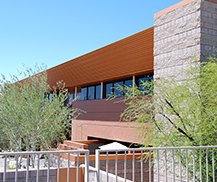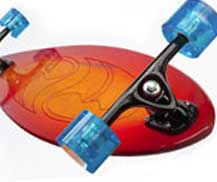DTM 3000 Fast Topcoat Primer
DTM 3000 primer is a fast topcoat corrosion resistant aliphatic polyurethane primer/sealer. DTM 3000 is easily applied to provide a smooth high grade surface for finish coating with PC3 or PC4. Precision's DTM primers are ultra-violet resistant so they can be used under metallic and iridescent finish coats which are translucent. As an ultra-fast recoatable primer, DTM 3000 is preferred for use in theme parks and by sign painters to meet operational time constraints.
Surface Preparation of Substrates Commonly Primed with DTM 3000
The degree of adhesion and level of performance of atmospheric coatings is dependent on the degree of surface preparation. The properly prepared surface for coating must be sound and cohesively strong, clean and free of loose particles and contaminants, dry and exhibit a surface anchor profile for adhesion of performance coatings.
Surface preparation starts with the removal of contaminants including oils, grease, silicone, chloride and particulates. The prepared surface should be dry and provide a profile for mechanical bonding of the performance coating system. Surface preparation varies with the substrate. The most popular substrates coated with Precision Coatings DTM 3000 primer include previously coated substrates, aluminum and fiberglass composites.
Industry standards for surface preparation are established by organizations such as the Society of Protective Coatings (SSPC), NACE International, the International Standards Organization (ISO), and the International Concrete Repair Institute (ICRI).
Previously Coated Substrates
The existing coating must be sound and cohesively strong to form a foundation for the coating system to be applied. The existing coating surface shall be cleaned to remove all contaminants per SSPC-SP1. The surface shall be abraded with the appropriate abrasive paper to establish an anchor profile in the existing coating to obtain a mechanical adhesion for the application of the coating system. The selection of abrasive paper is dependent on the hardness of the existing coating. Hard surfaces may require silicon carbide abrasives of 80-180 grit, while softer coating films may only require aluminum oxide abrasives in the 150-340 grit range.
Prior to coating, the substrate must be clean and dry. Air and surface temperature must be above 50⁰ Fahrenheit and no more than 95⁰ Fahrenheit. Surface temperature must be at least 5⁰F (3⁰C) above the dew point.
Aluminum
Aluminum substrates must be cleaned of all oils and preservatives. Aluminum substrates can be prepared for coating for atmospheric service by sweep blasting per SSPC-SP16 utilizing an angular non-metallic abrasive to produce a uniform and dense anchor profile, power tool / hand tool abraded aggressively utilizing silicon-carbide abrasive paper or chemically converted utilizing a chromating conversion coating process in accordance with Mil-DTL-5541.
Prior to coating, the substrate must be clean and dry. Air and surface temperature must be above 50⁰ Fahrenheit and no more than 95⁰ Fahrenheit. Surface temperature must be at least 5⁰F (3⁰C) above the dew point.
Anodized Aluminum
Anodized aluminum must be cleaned of all oils and preservatives. Aluminum alloys that are hard anodized have been electro-chemically treated to form a hard corrosion resistant non-porous film on the surface of the aluminum. Anodized aluminum substrates can be prepared for coating for atmospheric service by sweep blasting per SSPC-SP16 utilizing an angular non-metallic abrasive to produce a uniform and dense anchor profile. Anodized aluminum substrates can also be prepared using power tool and hand tool preparation methods, with aggressive rotational abrading of the substrate utilizing silicon-carbide abrasives from 80-100 grit. The anodized surface should be thoroughly inspected to confirm adequate anchor profile to provide a mechanical bond for the coating system.
Prior to coating, the substrate must be clean and dry. Air and surface temperature must be above 50⁰ Fahrenheit and no more than 95⁰ Fahrenheit. Surface temperature must be at least 5⁰F (3⁰C) above the dew point.
Coatable Fiberglass Composites
Fiberglass composites and plastics must be cleaned of all oils and mold release compounds. The substrate should be thoroughly abraded with 100 grit to 180 grit abrasive paper to provide an anchor profile for the mechanical adhesion of the coating system. Prior to application of the coating, clean the surface with a solvent such as acetone.
Prior to coating, the substrate must be clean and dry. Air and surface temperature must be above 50⁰ Fahrenheit and no more than 95⁰ Fahrenheit. Surface temperature must be at least 5⁰F (3⁰C) above the dew point.
DTM 3000 Primer Product Data Sheet
- DTM 3000 Fast Dry Primer Product Data Sheet
- DTM 3000 Resin Safety Data Sheet
- DTM 3000 Activator Safety Data Sheet






